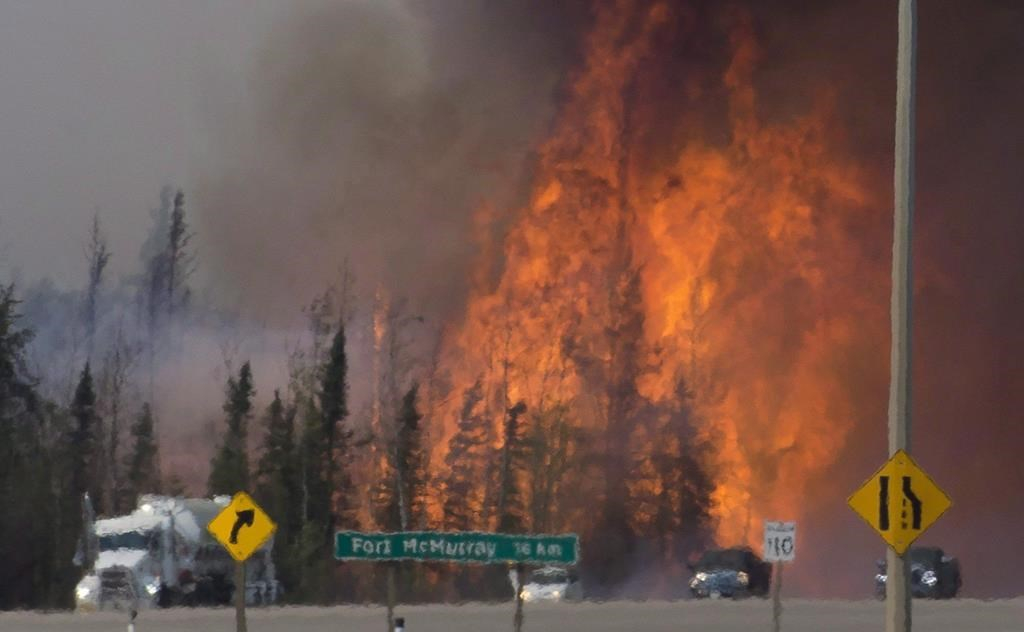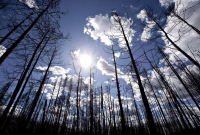Support strong Canadian climate journalism for 2025
Okanagan Mountain Park, B.C., 2003: 25,600 hectares burned, 33,050 people evacuated, 238 homes burned.
McLure, B.C., 2003: 26,420 hectares burned, destroying or damaging 72 homes, and forcing 3,800 people from their homes.
Slave Lake, Alta., 2011: 4,700 hectares burned, 433 buildings destroyed, forced the complete evacuation of the town of 7,000, caused over $700 million in damage.
Northwest Territories, 2014: By area, still the most hectares burned in a single fire season in Canada at 3.5 million hectares. It cost $55 million to fight. Smoke drifted as far south as North Dakota.
Fort McMurray, Alta., 2016: It burned 590,000 hectares and forced the emergency evacuation of all 88,000 residents. The fire began on May 1, the city was evacuated May 3. Residents began to return June 1. The fire was considered out of control until early July and was not fully extinguished until August. It caused more than $9.9 billion in damage and burned 2,400 homes. No direct deaths are associated with it, but two people were killed in a car accident during the evacuation.
British Columbia, 2017: Burned 1.2 million hectares, the worst on record to that date until surpassed in 2018. An estimated 65,000 people had to leave their homes, and the province spent $649 million to fight the fires. On one single day in July, a lightning storm lit 108 different fires.
British Columbia, 2018: Worst season on record in B.C., burning 1.35 million hectares, requiring 66 evacuation orders affecting 2,211 properties. The province spent $615 million to fight the fires.
This report by The Canadian Press was first published Jan. 7, 2020.





Comments